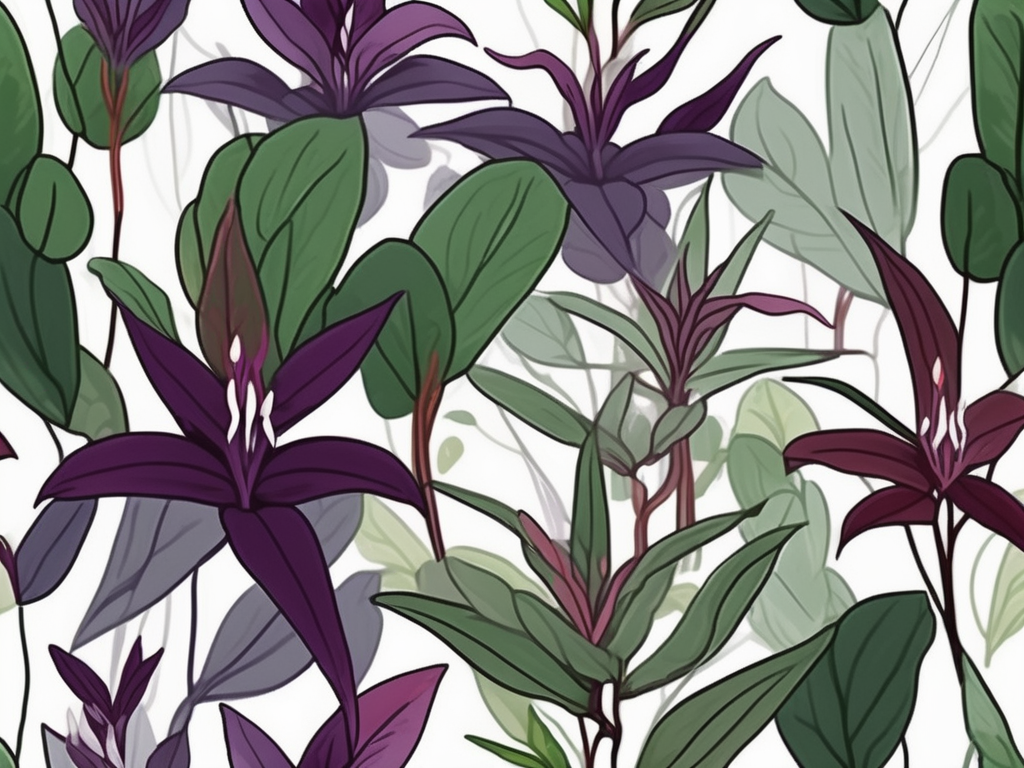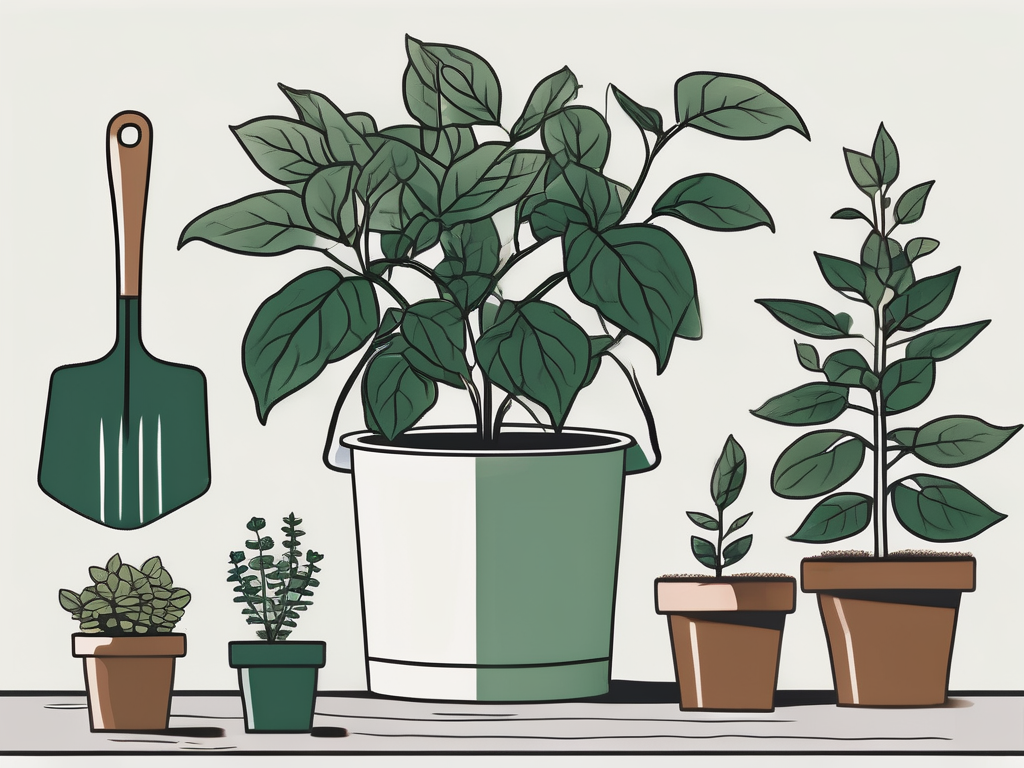
The Wandering Jew plant, with its striking foliage and easy-going nature, has become a favorite among plant lovers. Whether you're a seasoned plant parent or just starting to fill your home with greenery, understanding the different types of Wandering Jew plants can help you make the best choice for your space.
In this article, we'll explore various varieties of the Wandering Jew, discuss their unique features, and provide tips on how to care for them. So grab a cozy seat, and let's get to know these beautiful plants that can add a splash of color and life to any room.
What Makes Wandering Jew Plants Stand Out?
Wandering Jew plants, scientifically known as Tradescantia, are popular for a reason. These plants are admired for their vibrant, variegated foliage that comes in shades of purple, green, pink, and silver. They're also quite adaptable, making them suitable for a range of indoor environments. But what else makes them so appealing?
- Versatile Growth Habit: Wandering Jew plants can be grown in hanging baskets, pots, or even as ground cover. Their trailing vines can cascade beautifully, creating a lush, colorful display.
- Low Maintenance: These plants don't demand much attention. As long as they receive adequate light and water, they tend to thrive.
- Easy Propagation: If you love sharing plants with friends or expanding your collection, you'll be happy to know that Wandering Jews propagate easily from cuttings.
With these characteristics, it's no wonder these plants are a popular choice for indoor gardening. But let's take a closer look at the specific types you might consider adding to your home.
Tradescantia Zebrina: The Classic Choice
When people think of the Wandering Jew plant, Tradescantia zebrina often comes to mind. This classic variety is easily recognized by its striking purple and silver-striped leaves. The undersides of the leaves are typically a deep purple, adding to the plant's visual appeal.
One of the reasons Tradescantia zebrina is so beloved is its ease of care. It prefers bright, indirect light but can tolerate lower light conditions, making it flexible for various home settings. Just be sure to avoid direct sunlight, which can scorch its leaves.
Watering is simple: let the soil dry out slightly between waterings. Overwatering can lead to root rot, so it's better to err on the side of too little water than too much. If you're someone who occasionally forgets to water, this plant might just be your perfect match!
Interestingly enough, Tradescantia zebrina's vibrant colors can fade in low light, so if you notice the leaves looking a bit dull, consider moving it to a brighter spot. This plant is also a breeze to propagate. Snip a section of the stem, place it in water or soil, and watch it root in no time.
Tradescantia Pallida: A Purple Powerhouse
If you're all about bold colors, Tradescantia pallida, commonly known as the Purple Heart, is a fantastic option. This variety boasts rich, deep purple leaves that can make a stunning addition to any plant collection.
Like its relatives, the Purple Heart prefers bright, indirect light to maintain its vibrant color. However, it can tolerate direct sunlight better than some other varieties, which can intensify its purple hue. This makes it an excellent choice for a sunny windowsill.
Watering this plant follows the same general rule: let the soil dry out between waterings. While it’s drought-tolerant, consistent moisture will keep it looking its best.
The Purple Heart is also known for its resilience. If you live in a warmer climate, you might even consider growing it outdoors as a ground cover. It's a fast grower, so don't be surprised if it quickly fills out its space. And as always, propagation is a cinch—just take a cutting, place it in water or soil, and watch the magic happen!
Tradescantia Fluminensis: The Subtle Beauty
Tradescantia fluminensis, or the Small Leaf Spiderwort, is often mistaken for the more common Zebrina due to its similar growth habit. However, this variety has its own charm with its glossy green leaves and subtle white stripes.
This plant is a bit more laid back in terms of light requirements. It can handle lower light conditions better than some of its colorful counterparts, making it a great fit for rooms with less natural light. Just keep in mind that while it can tolerate shade, its growth might slow down.
Watering is straightforward. Keep the soil slightly moist but not soggy, and be sure to avoid letting it dry out completely. This plant appreciates a bit more humidity than some other Tradescantias, so misting it occasionally can help it thrive.
Fluminensis is a great choice if you're looking for a more understated addition to your plant collection. Its soft, understated beauty can complement bolder plants or stand on its own as a calming presence in your home.
Tradescantia Sillamontana: The Fuzzy Wonder
Tradescantia sillamontana, often known as the White Velvet or Cobweb Spiderwort, is quite unique among its family. Its leaves are covered in a soft, white fuzz, giving it a distinctive texture that sets it apart from other Wandering Jew varieties.
This plant hails from drier climates, so it's more drought-tolerant than some of its relatives. It enjoys bright light and can even handle some direct sunlight, which helps maintain its silvery fuzz. If it starts to look a bit leggy, try moving it to a brighter spot.
When it comes to watering, Tradescantia sillamontana prefers a bit of neglect. Allow the soil to dry out completely between waterings to prevent root rot. This plant is a great choice if you're often on the go or tend to forget about your plants—it's forgiving and low-maintenance.
One thing to note is that the fuzzy leaves can trap dust, so give them a gentle wipe with a damp cloth every so often to keep them clean. And like other Tradescantias, it's a breeze to propagate. Simply take a cutting, stick it in soil, and watch it grow!
Tradescantia Nanouk: The Instagram Darling
Tradescantia 'Nanouk' has become somewhat of a social media sensation, and it's easy to see why. With its pastel pink and green leaves and compact growth habit, it makes a striking addition to any plant collection.
This variety is relatively new, developed for its colorful foliage and easy-care nature. It thrives in bright, indirect light, but can also tolerate some direct sunlight. If you want those pink hues to really pop, be sure it's getting enough light.
Watering needs are similar to other Tradescantias—let the soil dry out slightly between waterings. While it's not as drought-tolerant as some other types, it doesn't like to sit in soggy soil, so ensure good drainage.
Tradescantia 'Nanouk' is a compact grower, making it perfect for small spaces or as part of a larger plant arrangement. And like its cousins, it's simple to propagate. Snip a stem, place it in water or soil, and watch it take root. If you're looking for a plant that's as photogenic as it is easy to care for, 'Nanouk' might be your new favorite.
Tradescantia Spathacea: The Boat Lily
Tradescantia spathacea, also known as the Moses-in-the-Cradle or Boat Lily, adds a unique twist to the Wandering Jew family. With its rosette-like growth and boat-shaped bracts, it stands out as a visually interesting choice.
This plant features dark green leaves with purple undersides, creating a striking contrast. It prefers bright, indirect light but can tolerate a range of lighting conditions. Avoid placing it in direct sunlight, which can cause leaf burn.
Watering is straightforward: keep the soil slightly moist, but let it dry out between waterings. It appreciates a bit more humidity than some other Tradescantias, so if your home is particularly dry, consider placing it on a pebble tray or misting it occasionally.
One of the unique features of the Boat Lily is its flower-like bracts that emerge from the center of the plant. These are not true flowers, but they add an interesting element to its appearance. And as with other Tradescantias, propagation is a breeze. Simply take a cutting and plant it in soil or water to start a new plant.
Tradescantia Albiflora: The Variegated Sweetheart
Last but certainly not least, Tradescantia albiflora, often referred to as the White-Flowered Wandering Jew, offers a more delicate appearance with its green and white variegated leaves.
This variety is perfect if you're looking for a subtle, elegant plant that still offers a touch of color. It thrives in bright, indirect light but can handle lower light conditions as well. Just be aware that too little light can cause the variegation to fade.
Watering is simple: keep the soil slightly moist but allow it to dry out between waterings. It's not as drought-tolerant as some other Tradescantias, so a more regular watering schedule will help keep it healthy.
Tradescantia albiflora is a charming plant that can fit in just about anywhere. Whether it's gracing a windowsill or hanging out in a basket, its gentle beauty is sure to impress. And like its relatives, propagation is easy—just take a cutting and watch it grow into a new plant.
Final Thoughts
Wandering Jew plants come in a variety of shapes, sizes, and colors, making them a versatile choice for any plant lover. Whether you prefer the classic stripes of Tradescantia zebrina or the bold hues of Tradescantia pallida, there's a Wandering Jew plant out there for everyone.
At Cafe Planta, we love helping you find the perfect plant for your home. Whether you're looking for something unique or just need advice on plant care, we're here to help. Feel free to reach out to us via email or connect with us on Instagram. Let's grow together!












